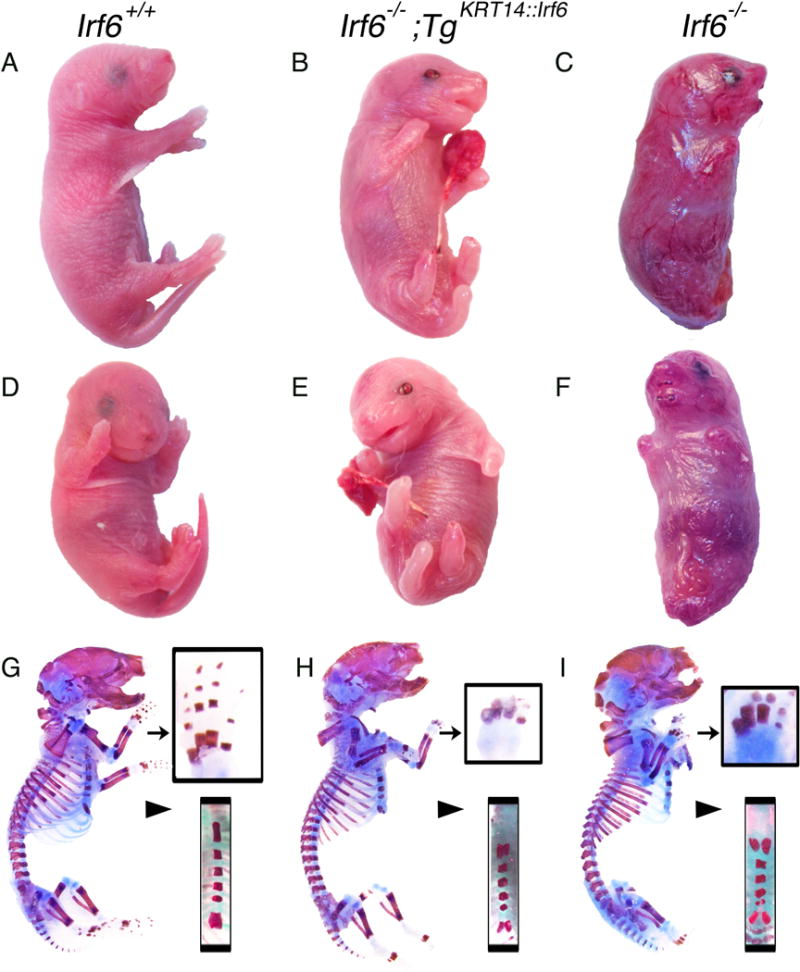Figure 1.

Transgenic KRT14::Irf6 delays perinatal lethality but does not rescue limb skeletal defects. Profile (A–C and G–I) and Frontal (D–F) views of representative P0 pups with the following genotypes; (A, D, G) Irf6+/+left column; (B, E, H) Irf6−/−;TgKRT14::Irf6 center column; (C, F, I) Irf6−/− right column. Gross analysis of Irf6−/−;TgKRT14::Irf6 (rescue pups) reveals perinatal survival, limb clubbing and syndactyly, a curled tail and a somewhat taut, shiny skin compared to wildtype littermates. Unlike Irf6−/− (knockout) littermates, the appendages of rescue embryos are not attached to the body wall and an open oral cavity is visible. (G–I) Profile views of skeletal preparations of P0 pups. Analysis of rescue pups reveals limb clubbing and syndactyly, in a manner highly analogous to Irf6−/− (arrow, top inset). In contrast, the sternum (arrow head, bottom inset) and in particular the xiphoid process appears less bifurcated in rescue pups.
